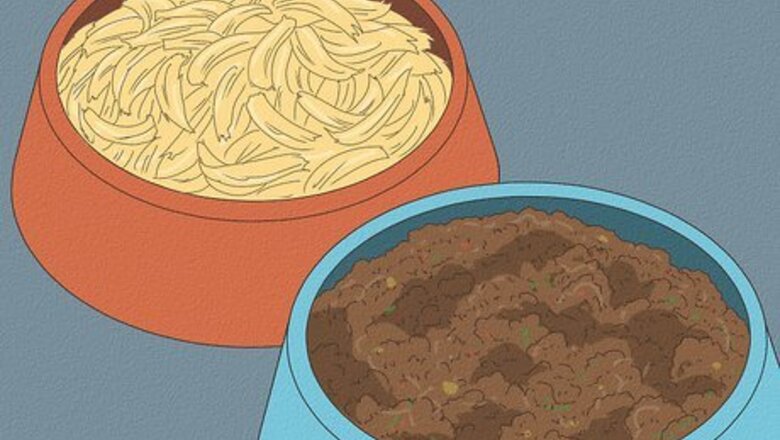
views
- Give your dog bland foods with lots of nutrients, like shredded chicken, cooked turkey, or bone broth.
- Try enticing your dog with chicken- or beef-flavored baby food.
- Reintroduce foods slowly by hand-feeding your pup and giving them multiple small meals throughout the day.
Diet for Dogs with Parvo
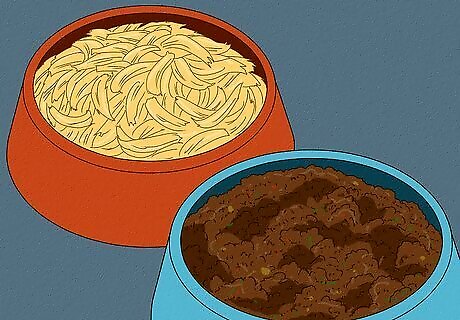
Bland foods Bland foods are home-cooked foods that have little to no spices or flavoring. These are ideal when you’re nursing a dog through parvo, because they’re easy on the digestive tract while still providing important nutrients. Try feeding your dog about 1 tbsp (14 g) of foods like: Boiled and shredded chicken (skin and bones removed) Lean ground beef or turkey (cooked) Bone broth Cooked white rice Cooked plain pasta Cottage cheese (fat-free)
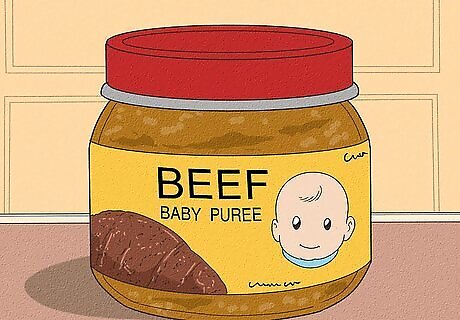
Meat-based baby food Chicken- or beef-flavored baby food is hard for a pup to resist. Since it’s soft, it’s easy to chew, and even easier to digest. Make sure that there are no harmful ingredients, like onion powder or garlic powder, to keep your dog on the mend.
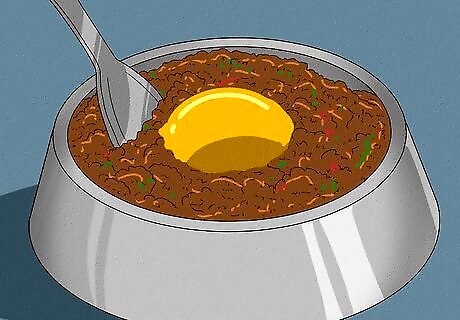
Egg yolks Studies show that eggs, specifically the yolks, contain the right nutrients to aid in digestion and even fight infections in dogs. Try mixing a raw egg yolk into your dog’s next meal to boost their appetite and give them the protein that they need.
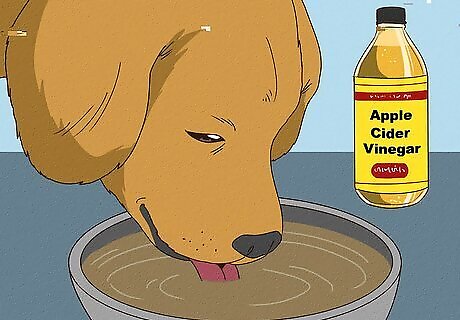
Diluted apple cider vinegar Apple cider vinegar aids in digestion in humans, but it can help with your dog’s digestive tract, too. If your vet says it’s okay, dilute a small capful of apple cider vinegar into about 1 c (240 mL) of water before giving it to your pup. Undiluted apple cider vinegar is too strong for your puppy to drink, so make sure you always mix it with water before giving it to them.
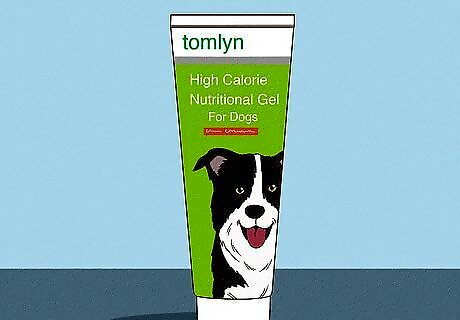
High-calorie supplements If your vet recommends it, you can try giving your dogs supplements to increase their calorie intake. Look for high-calorie supplements in gel form to help your dog eat and digest them easily, and follow the dosage instructions on the package.
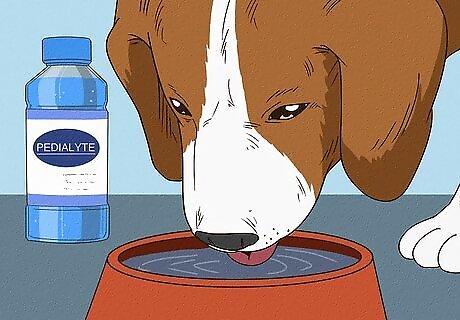
Pedialyte (for dehydration) Along with your pup not eating, they might not be drinking much, either. Dehydration is a serious issue for dogs, and it’s important to replenish their electrolytes as fast as possible. Talk to your vet about giving your dog Pedialyte, an electrolyte-enhanced drink, and how much you should give them. If your dog is really dehydrated and still refusing liquids, your vet may recommend starting subcutaneous liquids (or IV liquids). They may recommend coming back into the vet for this, or they may send you home with syringes that you can administer under your dog’s skin.
How to Reintroduce Food after Parvo
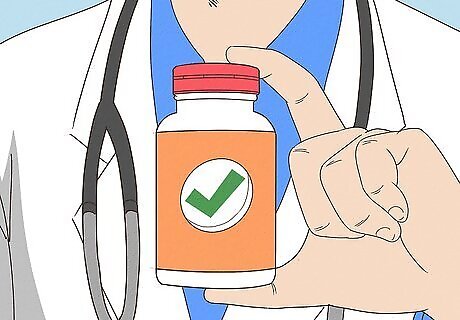
Get medication from your vet to help with nausea. Along with the antibiotics your dog will likely be taking, your vet may prescribe something to increase their appetite and reduce queasiness. If your pup doesn’t have much of an appetite at all, talk to your doctor about medication that might help settle their stomach. Cerenia is the most common and effective anti-nausea medication for dogs. Depending on how your dog is doing, your vet may also give you an anti-diarrhea, antacid, or probiotic. Most medications come in pill-form. Get your pup to swallow a pill by hiding it in their favorite food so it’s hard to resist.
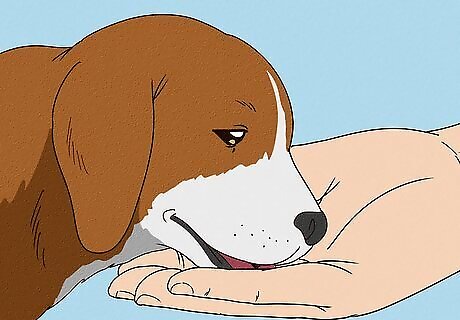
Hand-feed your pup to slowly reintroduce foods. Feeding your puppy by hand not only builds trust, but can encourage and make them feel better about eating. Sit on the ground with your dog and feed them bite-sized pieces of food until they’re full. Hold the food out to your pup, but don’t force them to eat it. This could cause them to swallow their food wrong, leading to even more problems down the line. If your dog won’t eat after several days, your vet might suggest hand-feeding them with a syringe. That way, you can insert the food into their mouth so it’s much more likely that they swallow it.
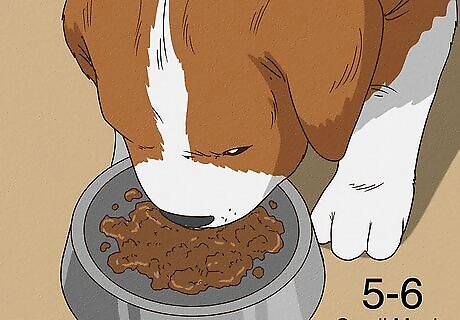
Feed your pup several small meals per day. Puppies need to eat more frequently than adult dogs do, even when they’re not sick. Instead of 2 to 3 big meals, give them 5 or 6 smaller meals as the day goes on. Instead of free-feeding your puppy (giving them unrestricted access to food in a bowl), keep an eye on how much they’re eating. This will help you keep track of how they’re feeling and whether or not they’re recovering from parvo.
Fasting vs. Feeding
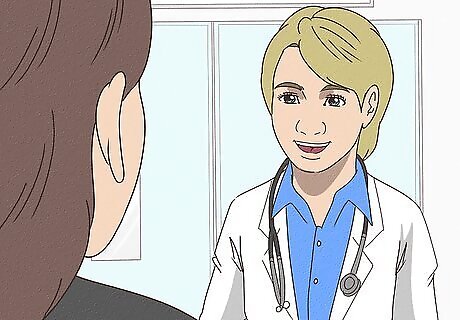
Fasting was a traditional treatment for parvo, but new science suggests feeding is better. As you research how to help your dog recover after parvo, you may stumble upon a more traditional nutritional approach, called NPO (“nil per os,” which translates to “nothing by mouth”). This approach involved not feeding your dog for 24 to 72 hours to heal the gastrointestinal tract before introducing food. However, new studies have shown that introducing foods right away is more beneficial, and will help your dog recover faster. Not sure which approach is right for your pup? Talk to your vet about it. They’ll be able to give you the right treatment option to help your dog heal quickly.
















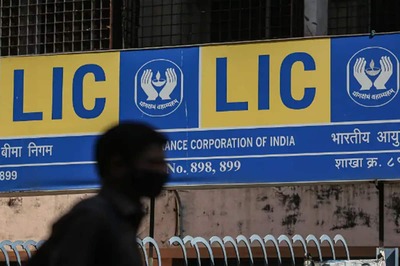
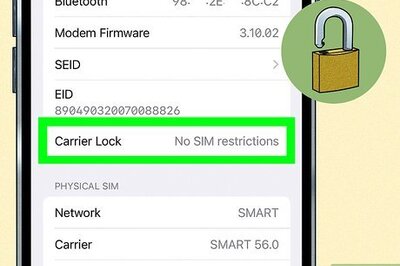


Comments
0 comment